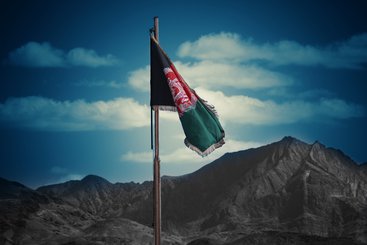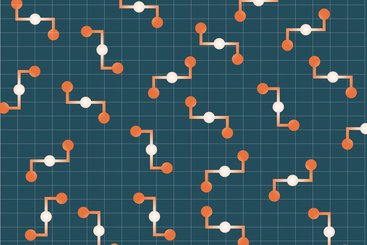On 24 December 2022, the Taliban supreme leader decreed a ban on women working in all national and international non-governmental organisations (NGOs). This happened only a few days after another widespread ban on girls from attending all public and private universities and courses in higher education, including in religious schools (madrasas). Many men reacted strongly and refused to attend universities in the absence of their women classmates.
Secondary and high schools had been closed for girls since the Taliban takeover in August 2021, prompting a campaign by different segments of Afghan society. From religious leaders to community leaders, men and women from all different walks of life, there have been wide-ranging calls on the authorities to #LetAfghanGirlsLearn, a hashtag that has trended on social media on several occasions. Afghan women and girls took to the streets of Kabul and other provinces, demanding their rights to education and jobs. In fact, these protests by Afghan women and girls are a unique and symbolic form of civilian resistance to the Taliban's oppression of women in the country. Yet, promises to reopen the schools remain unfulfilled.
Ban on women: part of the power game
It is important to understand where this systematic gender-based apartheid, as some would call it, is coming from. There are two dimensions in this series of actions by the Taliban. First, as a politico-military group that took over the country following a political deal with the United States and its allies, the Taliban aims to ensure – and to demonstrate – that they have a monopoly over violence within the country. There is no significant armed opposition with territorial claims that can challenge the current ruling regime. However, civic spaces continue to be used for protests and demonstrations by Afghan women who demand their legitimate rights to ‘education, work and freedom’ or ‘food, work and freedom’, the two slogans that mark women’s non-violent resistance against the Taliban restrictions. A ban on women and girls' education and on women working in NGOs is an effective way to ensure that there is no venue left for people to use their civic rights and challenge the government.
Secondly, for the Taliban – after nearly 17 months of regaining power – the delisting of their leaders from the UN sanction list, and above all their formal recognition by other governments, are the kinds of political demands that have not been met. Hence, the Taliban realise that the world only listens to them if they hit media headlines by banning women from work and education, etc., and in this way use the opportunity to pressure the world to listen to their demands. The recent visit of UN Deputy Secretary-General Amina Mohammed and her meetings with authorities are clear proof of this fact.
Both these recent acts are therefore an exercise of power by a ruling force that continues to curtail the civic space, particularly for women and girls. These acts are more opportunistic and performative actions to express absolute authority by the Taliban, rather than being grounded in religion or tradition, as some claim.
The humanitarian context and the impact on Afghans
The NGO women workers ban couldn’t come at a worse time – humanitarian crises are deepening in Afghanistan. The situation further deteriorated after August 2021, with the collapse of the international banking system in the country, the complete closure of all development assistance programmes, and an unprecedented level of brain drain, with most national professionals leading such programmes leaving the country.
UN and humanitarian organisations identified that nearly half of the Afghan population, 28.3 million people, are in need of life-saving assistance, and targeting a priority number of under 24 million civilians will still require a budget in 2023 of $4.62 billion. Over 3 million Afghan women and children are expected to suffer from malnutrition this year.
Due to the ban on women workers in NGOs, it is estimated that aid cannot be ensured for nearly half of those 28.3 million people – i.e., women and girls. To further break down the potential impact of such a ban, some organisations indicate that as many as 14.1 million people (including men and women of different age groups) will be deprived of general protection and basic services in the course of the year 2023. Women-headed households as well as women-headed NGOs will undoubtedly be hit hardest.
Women make up, on average, around 30% of the humanitarian aid agencies, although this varies in each sector and in each NGO. Women-headed NGOs and women aid workers play a critical role in the needs assessment, design, delivery, and research, monitoring and evaluation of humanitarian aid in areas covering mother and child healthcare, food nutrition, primary education, support to family livelihoods, and women’s economic empowerment. An initial Gender and Humanitarian Action survey showed that over 80% of NGOs either fully or partially suspended their operations and over 65% of women staff did not report to work since.
Nearly a month after the ban, some NGOs have resumed their critical life-saving operations as exceptions have been made for food and nutrition, and health and primary education activities, with some level of verbal assurances from the Taliban. Larger-scale humanitarian response and operations are either completely suspended by some international NGOs or have resumed without women staff. In choosing their course of action, humanitarian agencies once again face the dilemma of making a choice between the provision of life-saving services and holding the principle of gender inclusivity in the delivery of these services. There is also no coherence among the major UN agencies, some of whom ask their local partners to resume their activities without women staff while others protest the ban and support advocacy efforts to reverse it completely.
Similar to August 1998 with a temporary ban on women aid workers, humanitarian agencies are in ongoing negotiations with the authorities, using different approaches to ask for a full reversal of this restriction and let the organisations carry out their work in accordance with previous agreements and rules set by the NGO department of the Ministry of Economy. Advocacy work is mostly led by the Agency Coordinating Body for Afghan Relief and Development (ACBAR) and its members (mostly international NGOs); some of the national NGO coordinating bodies also expressed their grave concerns about the dreadful consequences of such restrictions on the population in the immediate situation (this freezing winter) and in the longer term.
In sum, there will be three major challenges in the long term. First, the quality of humanitarian programming will be widely affected due to restrictions on women’s roles in assessing and monitoring aid. Second, the humanitarian safeguarding and accountability measures designed to protect aid recipients will be compromised. Finally, all women-specific assistance in fields such as supporting action against gender-based violence, provision of protection, women’s mental health and counselling programmes will be stopped with dire consequences for those in need. It seems clear that without women aid workers, NGOs will not deliver principled and quality humanitarian assistance.
The way forward
The most urgent and immediate call by members of civil society and international humanitarian agencies is a revocation on the ban on women aid workers. This call may need to be further expanded to a national call by all recipients of humanitarian assistance to ask the authorities with one voice to let women take part in the delivery of humanitarian aid. Given that the ban is a demonstration of the Taliban’s power, it is especially powerful for Afghan civilians’ voices to be bolstered at the community level by civil society organisations and humanitarian agencies.
Humanitarian aid centred around men and boys alone will not meet needs in Afghanistan’s increasingly deteriorating situation. It is now time, more than ever before, to take coherent, joint and collaborative action on engaging with the Taliban to find the most constructive way forward to address this issue. This includes a coherent stance from UN agencies, whose varying positions are not conducive to a collective way forward.
The Taliban need to revisit their approach to limiting civic space for the population, as it is against all laws of war and human dignity to use the lives of innocent civilians for political bargaining. Therefore, Afghans need to be at the forefront of any dialogue with the Taliban at different levels on this subject, and make them realise the human cost of neglecting the rights of half of the population and the grave longer-term consequences of this ban on women and children.
The suspension of major aid operations also comes with significant costs for organisations. Many funders will be tempted to cut back and draw red lines, particularly on the point of gender inclusivity, and therefore to cut off support to life-saving systems. But until the ban is reversed, funding partners need to give clear guidance to implementing organisations on the modality of operations, allowing a level of flexibility so that aid still reaches the neediest people while also addressing the core principle of gender inclusivity by supporting dialogue with the Taliban.
Finally, it is evident that the humanitarian community in Afghanistan is not well equipped to deal with these dilemmas in terms of the politicisation of humanitarian aid and ensuring a coherent approach operationally to managing these emerging issues. A more rigorous and regular analysis of the context and its different dynamics needs to be at the core of all agencies’ agendas so that they can prepare themselves well and deliver aid in the most effective ways.



